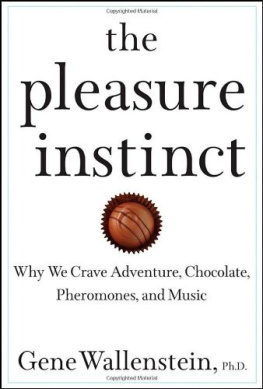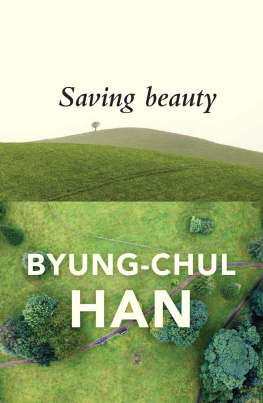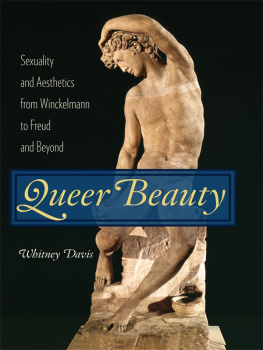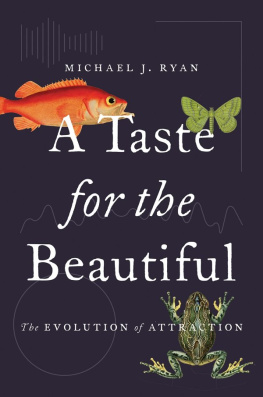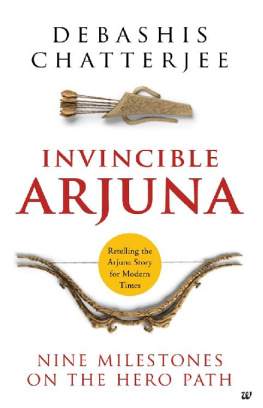THE AESTHETIC BRAIN
THE AESTHETIC BRAIN
How We Evolved to Desire Beauty and Enjoy Art
Anjan Chatterjee


Oxford University Press is a department of the University of Oxford. It furthers the Universitys objective of excellence in research, scholarship, and education by publishing worldwide.
Oxford New York
Auckland Cape Town Dar es Salaam Hong Kong Karachi
Kuala Lumpur Madrid Melbourne Mexico City Nairobi
New Delhi Shanghai Taipei Toronto
With offices in
Argentina Austria Brazil Chile Czech Republic France Greece
Guatemala Hungary Italy Japan Poland Portugal Singapore
South Korea Switzerland Thailand Turkey Ukraine Vietnam
Oxford is a registered trademark of Oxford University Press in the UK and certain other countries.
Published in the United States of America by
Oxford University Press
198 Madison Avenue, New York, NY 10016
Oxford University Press 2014
All rights reserved. No part of this publication may be reproduced, stored in a retrieval system, or transmitted, in any form or by any means, without the prior permission in writing of Oxford University Press, or as expressly permitted by law, by license, or under terms agreed with the appropriate reproduction rights organization. Inquiries concerning reproduction outside the scope of the above should be sent to the Rights Department, Oxford University Press, at the address above.
You must not circulate this work in any other form and you must impose this same condition on any acquirer.
Library of Congress Cataloging-in-Publication Data
Chatterjee, Anjan.
The aesthetic brain: how we evolved to desire beauty and enjoy art/Anjan Chatterjee.
pages cm
Includes bibliographical references and index.
ISBN 9780199811809 (hardback) 1. AestheticsPsychological aspects.
2. Genetic psychology. 3. BrainEvolution. I. Title.
BH301.P78C45 2013
111.85dc23 2013014485
1 3 5 7 9 8 6 4 2
Printed in the United States of America
on acid-free paper
To my father and my mother
CONTENTS
PART ONE
BEAUTY
PART TWO
PLEASURE
PART THREE
ART
Like the proverbial fool, in writing about aesthetics, I may be rushing into places where angels fear to tread. Why should a scientist write about aesthetics? Art and aesthetics have long resided deep within the humanities. Philosophers, historians, critics, and artists themselves have had much to say. Could viewing aesthetics through the lens of science possibly contribute to the vast knowledge and deep insights that humanists have gathered over the years? At first glance it would appear unlikely.
Even if it is doubtful that science has something worthwhile to say about aesthetics, scientists like me might feel optimistic. This optimism, perhaps born out of ignorance, is bolstered by two central ideas. The first idea is that all human behavior, at least at the level of the individual, has a neural counterpart. There is no thought, no desire, no emotion, no dream, no flight of fancy that is not tethered to the activity of our nervous system. And so the scientist supposes that a fine understanding of the properties of the brain will shine its own special light on any human faculty. Such faculties include language, emotion, and perception, and there is no reason to expect that this understanding could not extend to aesthetics. The second idea is that evolutionary forces have sculpted our brains and behavior. Evolutionary biology and more recently evolutionary psychology provide a powerful framework from which to consider the forces that shape why we do what we do. Ideas from neuroscience and evolutionary psychology have not been historically available to scholars in the humanities. They have not been combined with each other to inform discussions about art and aesthetics. Thus, scientists who think that neuroscience will tell us the how of aesthetics and that evolutionary psychology will tell us the why of aesthetics might well be indulged our optimism. Perhaps we scientists have something worthwhile to say about aesthetics after all.
Some humanists hear this kind of bravado and remain skeptical. This skepticism takes many forms. Some simply dismiss the idea of scientific aesthetics as irrelevant. Others might consider it yet another fad destined to bask in its 15 minutes before fading back into proper obscurity. Still others are frankly hostile to the idea. Perhaps such reactions arise from general anxieties that neuroscientific barbarians are invading everywhere. Just in the last decade terms like neuroeconomics, neurolaw, neuroliterature, and even neurotheology have infested our language. Now even such a sacrosanct domain as aesthetics is not safe from neurohordes. Will neuroaestheticians plunder aesthetics of its riches and leave it a desiccated hull of its true glory?
The neuroscientist might be tempted to disregard such humanist reactions as the territorial cries of an endangered species. The humanities are under assault when it comes to jobs and funding and in some quarters are in danger of being left behind as science and technology marches on. The neuroscientist might dismiss humanist approaches to aesthetics as a nostalgic nod to the past. This is a past to which one might politely pay homage, while believing that the future lies ahead with science and technology. Or the neuroscientist might view the humanist response as anti-intellectual. Why reject any form of inquiry? Surely in the marketplace of ideas, if neuroscience and evolutionary psychology have anything to contribute, these contributions will survive. So the neuroscientist might think, lets forge ahead, do what we do, and not worry about humanist concerns.
I have drawn caricatures of neuroscientists and humanists. The reality is that most neuroscientists care little about the humanities, at least in their professional lives, and I suspect that scholars in the humanities care little about science as it relates to their fields of expertise. Of those who have more than a passing interest in the other domain of inquiry, many are open to considering points of convergence or are at least open to the possibility of a meaningful conversation. For examples of books that seek such convergences, take a look at Margaret Livingstones Vision and Art: The Biology of Seeing and John Onians Neuroarthistory.
I think that it is premature to be optimistic or pessimistic about the contributions of neuroscience and evolution to aesthetics. Neuroaesthetics is a growing field. It is still working out its research agenda, methods of investigation, and even which questions are worth pursuing. It is also too early to know how best to think of evolutionary psychology in the context of aesthetics. Again, the appropriate methods and what might be regarded as convincing evidence for a point of view are debated within the field. These early days in the science of aesthetics make it an exciting time. Horizons are wide open. New discoveries seem possible.
There are, however, inherent tensions between the humanities and science that we should acknowledge. The ways that these tensions will play out as neuroaesthetics evolves remain to be seen. At the outset it is worth being explicit about the tensions, so that we can keep an eye on them even as we press on. Some tensions might be resolved along the way and others might well prove to be insurmountable. Three main tensions lie in the cracks between the humanities and the sciences. These tensions are between subjective and objective experiences, between concerns with the particular and the general, and between expansive and reductive approaches to aesthetics and art.
Next page





